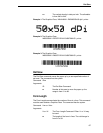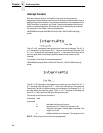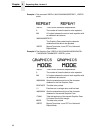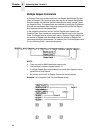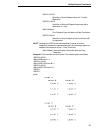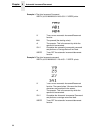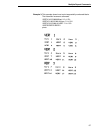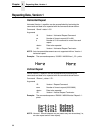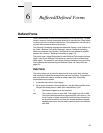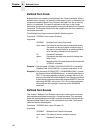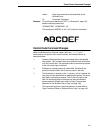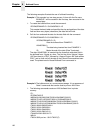
Multiple Repeat Commands
95
Incrementing or decrementing numbers and characters is similar to adding or
subtracting numbers. Align the numers and/or letters vertically in columns and
add or subtract each column. For example, K + 1 means to advance 1
character position from K to the next letter (i.e., K+1 = L and K-1 = J).
The following examples show how automatic increments (addition) and
decrements (subtraction) apply to numeric and character fields:
0A 0 A9 0A (Operand)
+1 -1 +1 +11 (Operator)
0B 9 B0 1B (Answer)
In automatic incrementing and decrementing, the alphabet wraps around
itself, meaning that A is one character position beyond Z. The normal
arithmetic rules of carrying or subtracting a 1 from other columns when adding
or subtracting also apply. For example:
0Z 1B (Operand)
+1 -2 (Operator)
1A 0Z (Answer)
Below are two additional examples showing how this carry function operates:
0T 0A (Operand)
+17 +27 (Operator)
2A 2H (Answer)
The answer is always limited to the total number of characters and spaces in
the operand, even if the operator value has the full twelve characters allowed.
For example:
Y 2F 16A (Operand)
+112 -105 +1234 (Operator)
A 2A 39E (Answer)
If spaces are included in the operand value, only numeric values can appear
in the answer for those same columns. No letters are permitted. For example:
(1 space) Y 2F (Operand)
+112 -105 (Operator)
2A 2A (Answer)



